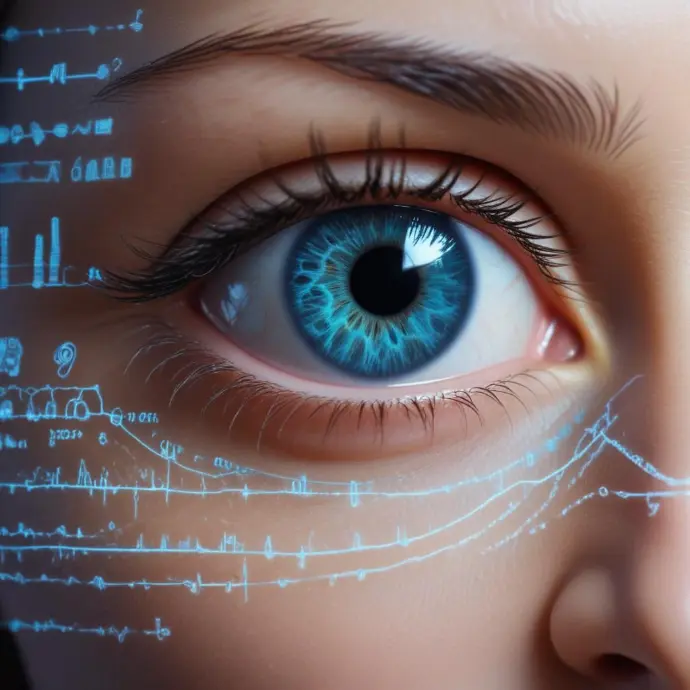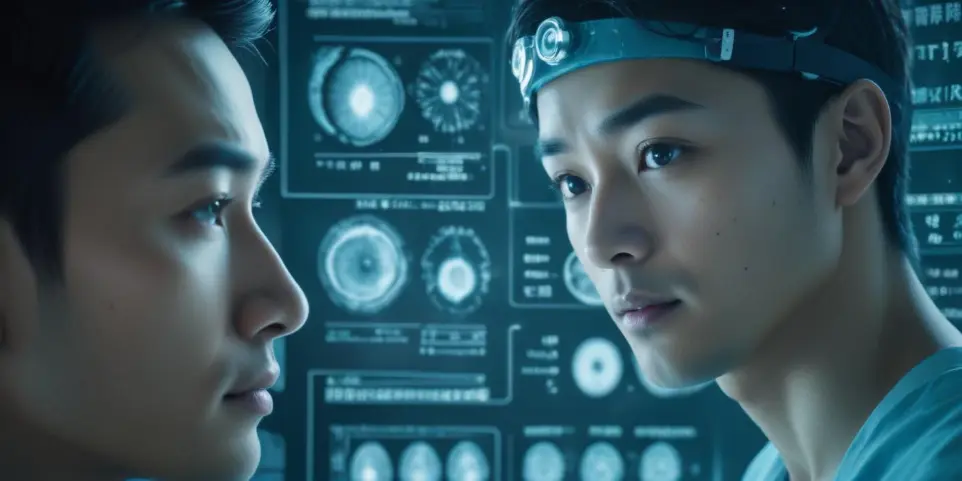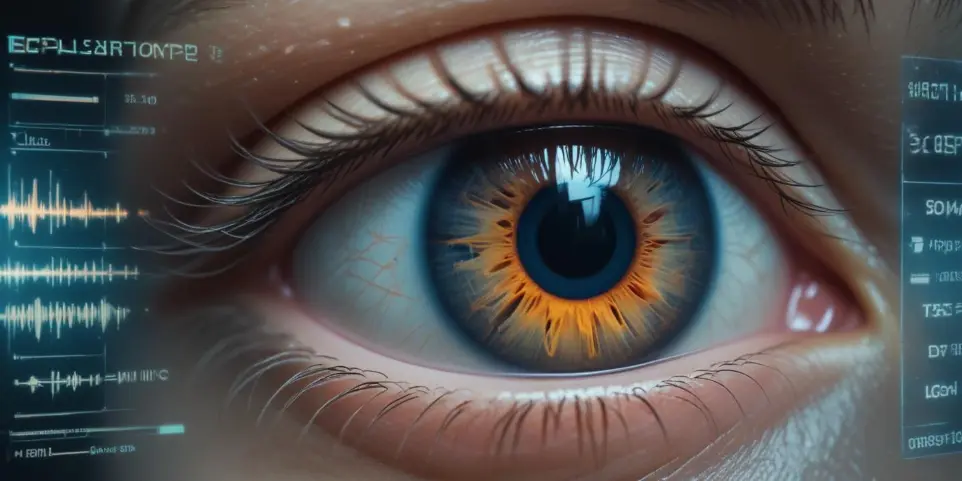
AI and the Future of Ophthalmology: Detecting Eye Diseases Before It's Too Late
In this space, you'll dive into the exciting world of artificial intelligence and its impact on ophthalmology. Discover how AI is revolutionizing the early detection of eye diseases in our feature article "AI and the Future of Ophthalmology: Detecting Eye Diseases Before It's Too Late." Are you ready to unravel the most amazing advances in science and technology? Go ahead, the next technological revolution awaits.
Artificial Intelligence in Ophthalmological Screening
Ophthalmology has undergone a revolution with the implementation of Artificial Intelligence (AI), which has enabled significant advances in the early detection of eye diseases. The combination of AI and ophthalmology has opened up new possibilities in the diagnosis and treatment of eye conditions, transforming the way these diseases are addressed.
AI in ophthalmology has enabled the automatic and accurate detection of a wide range of diseases, including glaucoma, macular degeneration, and diabetic retinopathy. By analyzing retinal images and other eye tests, AI algorithms can identify early signs of disease that might otherwise go undetected in their initial stages.
This innovative approach not only streamlines the diagnostic process but also provides the opportunity for rapid intervention, which is crucial for preventing the progression of eye diseases and preserving patients' visual health. AI has proven to be an invaluable tool in the early detection of ophthalmic pathologies, contributing significantly to the prevention and effective treatment of these conditions.
AI has revolutionized the early detection of eye diseases by enabling the automatic identification of patterns and abnormalities in retinal images, optical coherence tomography (OCT), and other ophthalmic studies. This technology is capable of analyzing large volumes of data efficiently and accurately, which is critical in the early identification of conditions such as glaucoma, diabetic retinopathy, macular degeneration, and other diseases that affect vision.
AI's ability to detect subtle changes in ocular structures, which could be indicative of diseases in their early stages, has completely transformed ophthalmological practice. By facilitating the early identification of pathologies, AI offers the possibility of timely intervention, which can be decisive for patients' prognosis and quality of life.
Furthermore, AI in ophthalmic screening has enabled the optimization of workflows in healthcare centers, streamlining the interpretation of eye tests and providing professionals with an additional tool for making informed decisions in eye care.
AI plays a fundamental role in the prevention and treatment of eye diseases by enabling early detection, which in turn enables timely interventions to preserve patients' eye health. By identifying early signs of eye diseases, AI contributes to the prevention of complications and the implementation of effective therapeutic strategies.
Furthermore, AI has also facilitated the development of personalized treatments by providing detailed information on disease progression and each patient's response to specific therapies. This personalized analysis capability is critical in ophthalmology, where variability in disease presentation and response to treatment requires individualized approaches.
AI has transformed the ophthalmology landscape by providing tools for early detection, prevention, and effective treatment of eye diseases, significantly contributing to the visual health of the population.
Artificial intelligence (AI) has revolutionized the field of ophthalmology by offering advanced tools for the early diagnosis of eye diseases. By analyzing images and biomedical data, AI can detect patterns and abnormalities that might otherwise go unnoticed by the human eye, enabling the early identification of conditions such as glaucoma, macular degeneration, and diabetic retinopathy.
Thanks to machine learning algorithms, AI can process large volumes of images of the retina and other ocular structures, identifying signs of disease in early stages. This early detection capability is crucial for preventing the progression of eye diseases, preserving patients' vision, and improving treatment outcomes. With the help of AI, ophthalmologists can intervene in a timely manner, providing more effective care and reducing the negative impact of eye diseases on patients' quality of life.
Furthermore, AI in ophthalmic diagnostics not only streamlines the detection process but also contributes to resource optimization by enabling more efficient workload distribution in ophthalmic care centers. By improving diagnostic accuracy and speed, AI frees up healthcare professionals' time to focus on personalized patient care, resulting in higher-quality, comprehensive care.
Development of AI in Eye Disease Detection
The field of ophthalmology has seen significant advances thanks to the integration of emerging technologies, such as artificial intelligence (AI). These advancements have allowed for faster and more accurate detection and diagnosis of eye diseases, revolutionizing the way eye health problems are addressed.
AI has proven to be an invaluable tool in the early detection of eye diseases, such as glaucoma, diabetic retinopathy, and macular degeneration. Using advanced algorithms and machine learning, AI is able to analyze large volumes of ophthalmological data to identify patterns and abnormalities that might otherwise be missed by the human eye.
These advances in the early detection of eye diseases are critical to preventing vision loss and improving patients' quality of life. AI's ability to analyze retinal images and detect early signs of disease allows medical professionals to intervene promptly and provide preventative treatments before irreversible damage occurs.
AI has become an indispensable tool in the diagnosis of eye diseases, as it can analyze retinal images with unprecedented accuracy and speed. This technology makes it possible to identify patterns and abnormalities that could indicate the presence of eye diseases, facilitating the work of ophthalmologists and improving diagnostic accuracy.
Furthermore, AI has been shown to be able to detect subtle changes in the structure and color of the retina, which can be indicative of eye diseases in their early stages. This early detection capability is critical for preventing the progression of diseases such as diabetic retinopathy and macular degeneration, which can lead to blindness if left untreated.
AI has revolutionized the field of ophthalmology by enabling the early and accurate detection of eye diseases, significantly improving medical professionals' ability to provide preventative treatments and preserve patients' visual health.
The integration of AI into ophthalmic medical devices has represented a momentous advance in the detection and diagnosis of eye diseases. Combining the precision of AI with ophthalmic imaging technology has enabled the development of devices capable of identifying patterns and abnormalities in the retina with unprecedented effectiveness.
These AI-integrated medical devices can quickly analyze retinal images, identify early signs of eye diseases, and provide detailed information that facilitates diagnosis and treatment by ophthalmologists. Furthermore, AI's processing power has reduced the time required for accurate diagnoses, resulting in more efficient and timely medical care for patients.
The integration of AI into ophthalmic medical devices has revolutionized the way eye diseases are detected and diagnosed, enabling medical professionals to offer preventative treatments and preserve eye health more effectively.
The implementation of artificial intelligence (AI) in ophthalmic screening presents a wide range of benefits. First, AI can analyze large volumes of ocular imaging data quickly and accurately, enabling early detection of eye diseases such as glaucoma, macular degeneration, and diabetic retinopathy. This leads to more timely diagnoses, which in turn can significantly improve treatment success rates for these conditions.
On the other hand, the implementation of AI in ophthalmic screening also poses significant challenges. One of the key challenges is ensuring the accuracy of AI algorithms, as well as their ability to address a wide variety of ocular conditions and individual differences in ocular structures. Furthermore, the effective integration of AI in clinical settings requires rigorous validation of screening tools to ensure their reliability and safety in medical practice.
The implementation of AI in ophthalmic screening offers significant benefits in terms of early detection and diagnostic accuracy, but also poses challenges in terms of algorithm validation and accuracy. As technology continues to evolve, addressing these challenges is critical to fully realize the potential of AI in ophthalmology.
Practical Applications of Artificial Intelligence in Ophthalmology
Glaucoma is one of the leading causes of blindness worldwide, and early detection is critical to preventing irreversible vision damage. Artificial intelligence has revolutionized the way this eye disease is diagnosed. By analyzing retinal images, AI algorithms are able to identify patterns and abnormalities that could indicate the presence of glaucoma, even in its very early stages.
These AI systems can detect subtle changes in the optic nerve and nerve fiber layer thickness, allowing ophthalmologists to intervene preemptively, before the patient experiences obvious symptoms. AI's ability to analyze large volumes of data quickly and accurately has significantly improved the early detection of glaucoma, providing the opportunity to receive treatment in the earliest stages of the disease.
The implementation of artificial intelligence in glaucoma detection represents a crucial advance in ophthalmology, as it helps reduce the risk of severe visual impairment and improve patients' quality of life.
Macular degeneration is another common eye condition that can cause vision loss in older adults. Early detection of this disease is essential for initiating timely treatment that can slow its progression. In this regard, artificial intelligence has proven to be an invaluable tool.
AI systems can analyze retinal images and detect early signs of macular degeneration accurately and efficiently. By identifying changes in the morphology and structure of the macula, AI enables eye care professionals to intervene before the disease causes significant damage to the patient's vision.
Thanks to artificial intelligence's ability to process large data sets and recognize complex patterns, the early diagnosis of macular degeneration has significantly improved, which in turn has contributed to optimizing treatment and monitoring strategies for patients affected by this condition.
Diabetic retinopathy is a serious ocular complication affecting people with diabetes, and its early detection is crucial to preventing vision loss. Artificial intelligence has emerged as a fundamental tool to address this challenge, as it can analyze retinal images and detect signs of diabetic retinopathy with surprising accuracy.
AI algorithms are capable of identifying abnormalities in retinal blood vessels, as well as the presence of exudates and hemorrhages, which are indicators of diabetic retinopathy. This early detection capability allows ophthalmology professionals to initiate preventive treatments and closely monitor diabetic patients, which can prevent serious complications in the future.
Artificial intelligence has revolutionized the detection of diabetic retinopathy, offering the possibility of intervening in the early stages of the disease and significantly improving the visual prognosis of patients with diabetes.
Artificial intelligence (AI) has proven to be an invaluable tool in the early detection of cataracts, one of the leading causes of blindness worldwide. By analyzing eye images, AI algorithms can identify signs of lens opacity, allowing healthcare professionals to intervene promptly to prevent disease progression. This early detection capability not only helps preserve patients' vision but also reduces the burden on healthcare systems by minimizing the need for complex and costly surgeries associated with advanced cataracts.
By leveraging machine learning and image processing, AI can analyze large volumes of patient data and diagnose cataracts efficiently and accurately. This rapid processing capability allows ophthalmologists to make informed decisions in real time, resulting in faster diagnoses and more effective treatment plans. Furthermore, AI can identify subtle patterns that might otherwise be missed by the human eye, increasing diagnostic accuracy and improving the quality of ophthalmic care.
AI has become a crucial tool for the rapid and accurate detection of cataracts, having a significant impact on preventing blindness and optimizing resources in the field of ophthalmology. As this technology continues to evolve, its role in the detection and management of eye diseases is expected to continue to grow, bringing hope to millions of people around the world battling debilitating ophthalmic conditions.


Social and Medical Impact of AI in Ophthalmic Screening
The implementation of artificial intelligence in the early detection of eye diseases offers numerous public health benefits. The ability to identify eye conditions in their early stages enables timely treatment that can prevent permanent vision loss in a large number of patients. This early detection not only contributes to individual eye health but also has a significant impact on reducing the economic and social burden associated with visual impairment.
Furthermore, AI in ophthalmology enables access to accurate diagnoses in remote or resource-limited areas, where specialized medical care may be scarce. This expands the reach of eye care to underserved communities, improving equity in eye health and contributing to the reduction of avoidable blindness globally.
The early detection of eye diseases through artificial intelligence represents a significant advance for public health, with the potential to positively transform the quality of life for millions of people around the world.
The use of artificial intelligence in ophthalmology raises several ethical and legal challenges that require careful attention. One of the most prominent aspects is the privacy and confidentiality of patient data. The collection, storage, and analysis of sensitive medical information entails the responsibility to ensure the protection of patient privacy and compliance with data protection regulations.
Another important ethical challenge lies in the transparency and explainability of the algorithms used in the detection of ocular diseases. It is critical that healthcare professionals and patients understand how artificial intelligence works in the diagnostic process, as well as any potential biases or limitations associated with its use.
Furthermore, there are ethical considerations surrounding medical liability and decision-making. As AI plays a more prominent role in ophthalmic diagnosis, it is crucial to clearly define the responsibilities of healthcare professionals and establish protocols for the oversight and validation of results generated by artificial intelligence systems.
The role of artificial intelligence in ophthalmology is constantly evolving and is expected to continue transforming medical practice in the future. AI is anticipated to not only improve the accuracy and efficiency of ocular disease detection but may also contribute to the development of personalized treatments and the prediction of the progression of ophthalmic conditions.
Furthermore, further advancement is foreseen in ophthalmic telemedicine, where artificial intelligence will facilitate the remote interpretation of ocular images, expanding access to specialized care worldwide. This integration of AI into teleophthalmology promises to reduce disparities in eye care and improve the detection and treatment of ocular diseases in resource-limited settings.
The future of ophthalmology is shaping up with deeper integration of artificial intelligence, which promises to drive significant advances in the detection, treatment, and management of eye diseases, paving the way for more accurate, accessible, and personalized eye care.
Conclusions
Early detection of eye diseases is essential for preserving vision and overall eye health. The combination of artificial intelligence (AI) and ophthalmology represents a significant advancement in this field, with a promising future that offers great benefits for patients and eye care professionals.
Thanks to AI, automated detection systems have been developed that can identify eye pathologies in their early stages, allowing for more effective treatment and, in many cases, preventing vision loss. This technology has the potential to revolutionize the way ophthalmologic examinations are performed, streamlining the process and providing more accurate results.
Furthermore, AI in ophthalmologic screening offers the potential to expand access to quality eye care, especially in areas where the availability of ophthalmologists is limited. This means that a greater number of people could benefit from preventive examinations and accurate diagnoses, which would contribute to reducing the incidence of advanced eye diseases.



